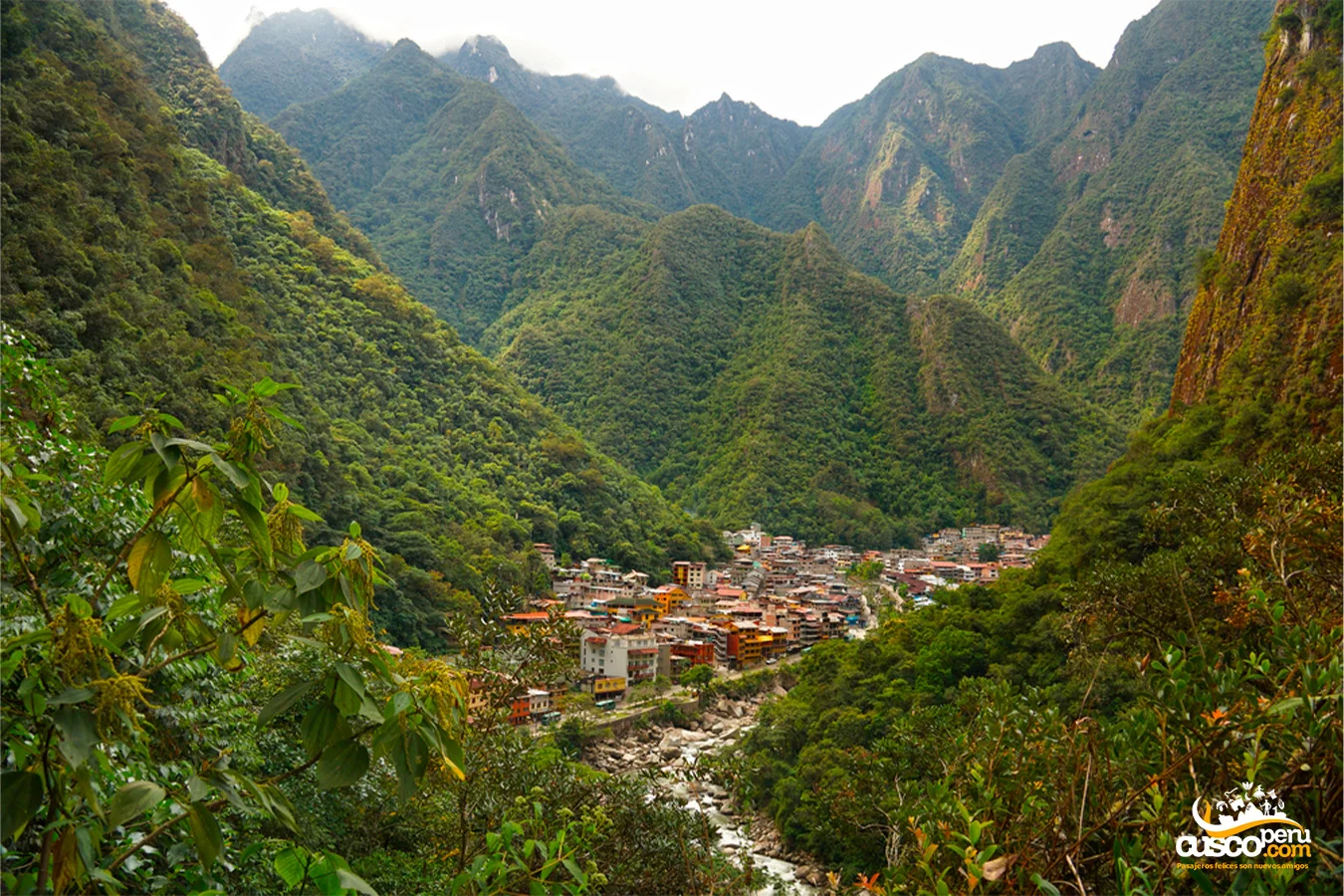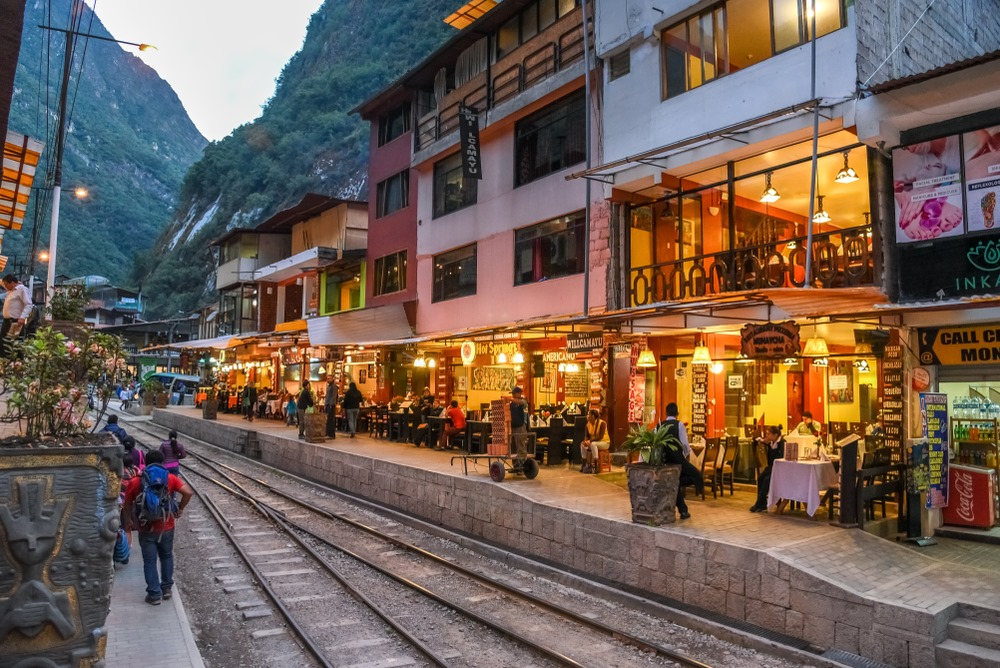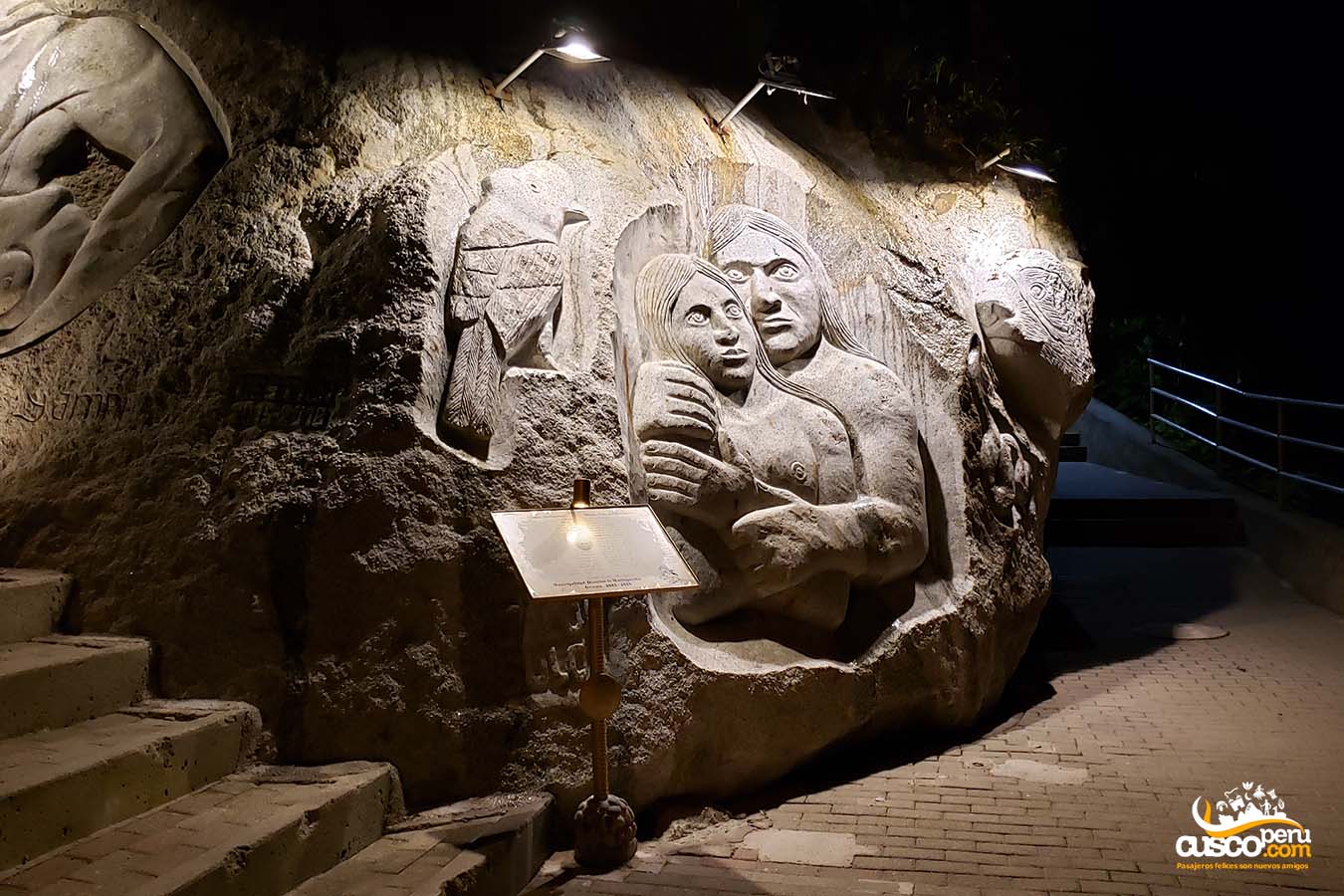
Aguas Calientes or Machu Picchu Town is the nearest village to the World Wonder. Located just 25 minutes by bus from the Inca citadel, it becomes the main access route to the Machu Picchu Sanctuary.

The town of Aguas Calientes began as a small railway camp known as Maquinachayoq, for the construction of the railway line that would connect Cusco with Santa Ana (a district in the province of La Convención). To this camp were added families dedicated to agriculture, forming a small town in the year 1901. When the railway was completed in 1931, the population settled in the area.
Aguas Calientes owes its name to the hot springs it possesses. Being a stop before reaching Machu Picchu, it offers several tourist attractions that very few know about.
The village of Aguas Calientes is located 112 Km northeast of the city of Cusco, at an altitude of 2,040 m. It is situated on the banks of the Urubamba River (which crosses the entire Sacred Valley of the Incas), surrounded by vegetation typical of the high jungle. This village belongs to the province of Urubamba, department of Cusco.
The village of Aguas Calientes is located 3h 30m from the city of Cusco (1h 30m by bus and 2h by train).
The citadel of Machu Picchu is 10Km away from the village of Aguas Calientes. Approximately 25 minutes away by bus.
The climate is warm-temperate (being high jungle) and very humid. Its temperature is around 16 °C to 20 °C. It is delimited by two seasons: rainy season and dry season.
To reach the village of Aguas Calientes, there are various options.

Upon arriving at this magical village we can appreciate how welcoming it is. Machu Picchu Village has many attractions that one can enjoy while visiting or before ascending to the Inca citadel.
Located at the end of Av. Hermanos Ayar, there is a spring from which hot waters flow, with a temperature ranging between 38 °C and 45 °C. This place is favored by visitors seeking to relax amidst nature, before or after their visit to Machu Picchu. The village of Aguas Calientes owes its name precisely to this site.
Putucusi, which comes from Quechua meaning “Happy Mountain,” is one of the mountains surrounding the citadel of Machu Picchu. The visit to this mountain is completely free, and its route begins in the same village. The path is the most challenging (even more so than the ascent to Huayna Picchu Mountain). In a certain section, you must climb using a rope and very steep wooden steps.
The Mandor Gardens located 4 km from the village of Aguas Calientes, approximately 1h walk. It is a natural area full of vegetation that features a waterfall with a drop of about 15m. This place is not only incredible for its natural beauty, but also because it helps in the preservation of hundreds of species of flora and fauna in the area. This site also offers a place for camping to fully enjoy the location.
The Butterfly House of Aguas Calientes is a must-stop before or after visiting Machu Picchu. This fantastic place studies approximately 300 species of butterflies from the area. Located on the banks of the Urubamba River, this space not only houses butterflies but also important flora for their development.
As an initiative of the local government, about 37 stone sculptures were constructed throughout the village, known as “Stone Chronicles”. The stone carving was performed by Cusco artists to beautify the village, all with Andean themes, no ticket is needed as it is visible to all visitors, in the square and main streets of the village.
The “Manuel Chávez Ballón” site museum (a Peruvian explorer who worked in Machu Picchu) features Inca ceramics and tools found in excavations at Machu Picchu. This place reopened its doors in July 2005.
It is located on the way from Aguas Calientes to Machu Picchu, about 30 minutes walk, open daily from 9am to 4pm. To enter this place, you require a ticket that you can obtain online.

The dry season is the best time to visit Aguas Calientes, spanning from April to October, during which the chances of rain are lower.
To get to Aguas Calientes, you need to go to a train station, usually the Ollantaytambo station, which is 1h by bus from Cusco; from there, it's a 2h train journey to Aguas Calientes.
Due to its warm temperate climate during the day, light clothing is recommended. However, temperatures can drop at night, so a warm jacket is necessary. Waterproof clothing is also recommended as rain can come unexpectedly at any time of the day.
To avoid altitude sickness, it is advisable to have a gradual acclimatization upon arriving in the city of Cusco and complement this with a light diet, as this can increase the risk of suffering from this condition. This process should not last more than 2 days.


Happy passengers